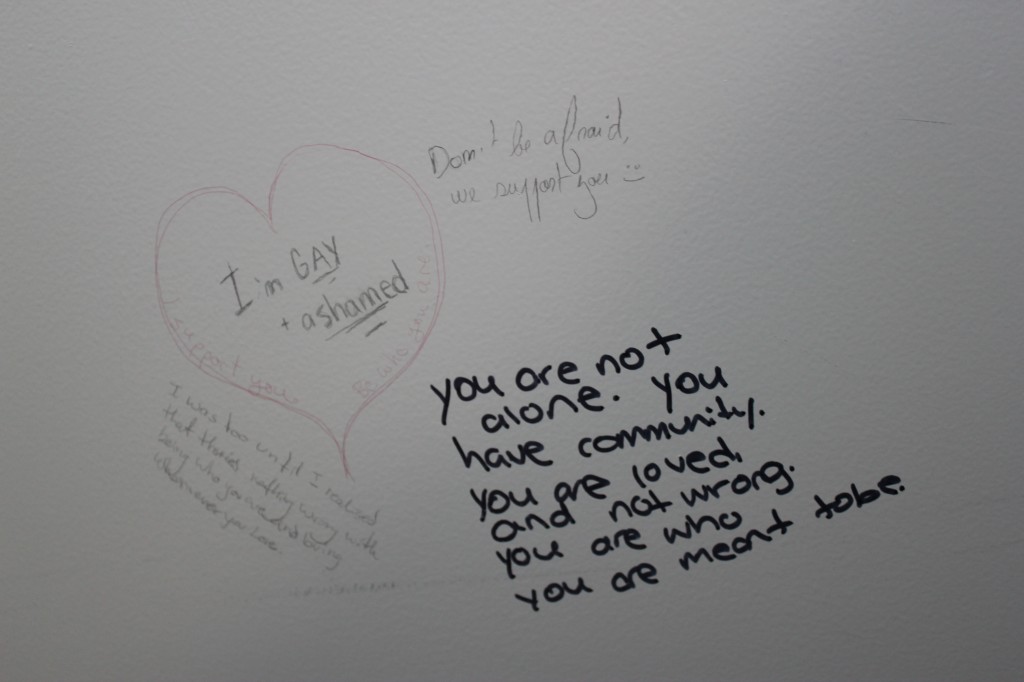In his study of men’s washrooms, Alan Dundes (1966, p. 94) found that the most common forms of “latrinalia” – or public restroom graffiti – included advertisements or solicitations; requests or commands concerning defecation and urination; commentaries; and personal laments or introspective musings.
This particular inscription was hidden away in a bathroom stall at the very end of a women’s washroom on the top floor of Buchanan D. Dundes does not go in depth about queer expressions of latrinalia, nor does he include in his taxonomy the form of confessional graffiti. Perhaps for good reason – confessional latrinalia, as I discovered, is very rare.
The scarcity of confessional graffiti is curious given the guaranteed anonymity of the inscriber, as well as the opportunity a restroom provides as a space to express opinions, beliefs, and revelations that might be considered taboo in everyday social life. In the case above, what was the psychological exigency that compelled the graffitist? The restroom seemed to be a space where she felt she could, in the comfort of anonymity, reach out to potential others like her, while also open up channels of discussion and, in this case, receive expressions of encouragement, empathy, and communal support. Latrinalia seems to fulfill a need for communication and function as a net for personal recognition and acceptance. Much of the confessional latrinalia I found involved messages of marginalization, anxiety, and social deviance – its significance in the bathroom is thus representative of the literal “waste” of those who are separated from conventional society.
By Alison Mah
Dundes, Alan. (1966). Here I sit – A study of American latrinalia. Kroeber Anthropological Society Papers, 34, 91-105. Retrieved from http://dpg.lib.berkeley.edu/webdb/anthpubs/search?all=&volume=34&journal=5&item=10.
I would suggest that, given a similar confession of homosexuality in a men’s bathroom, the reception would be much different. Do you agree or disagree?

